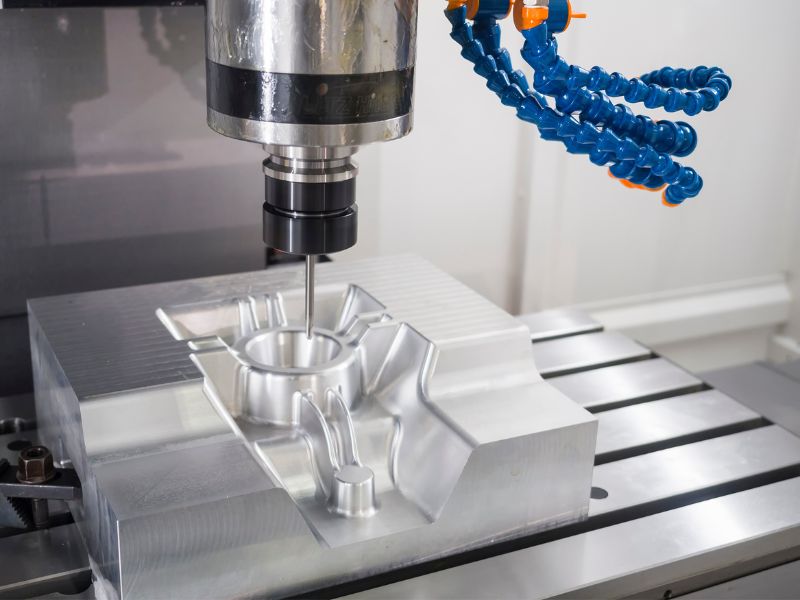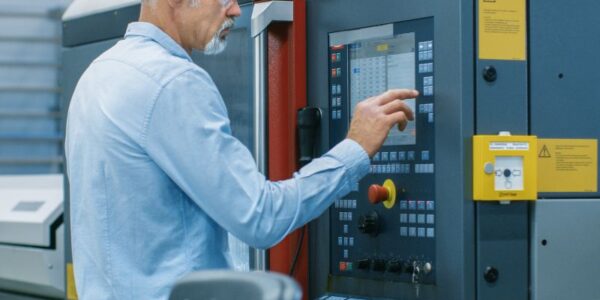Applications of CNC controller
CNC controller is the most important element of any CNC machine. It supervises the correctness of any CNC operation, and enables the machines to work smoothly and more efficiently.
Moreover, the CNC controller allows:
- conversion of instructions,
- execution of machining programs,
- correction of errors,
- introduction of convenient programming,
- introduction of operation features.
Controllers are also used to run diagnostics of a CNC machine.
Types of CNC controllers
Currently there are three types of CNC controllers on the market: motion type, loop control, and axis type.
Motion Type CNC Controllers
Motion type CNC controllers are the simplest and currently the most common. They are usually used in machines in which the position of the tool right over the axis of a hole is essential for the correctness of the system’s operation – mainly drills, and boring and perforating machines.
Loop Control CNC Controllers
Loop control CNC controllers rely on the looping mechanism to execute control. They allow movements at a certain speed, along a certain path, which is always parallel to the specific coordinate axis in the specified plane. Loop control CNC controllers can be further divided into open-looped systems, where the instructions and programs are transmitted to the controller through the input device, and closed-loop systems, where the feedback is gathered from the control system.
Axis Type CNC Controllers
Axis type CNC controllers allow for movements not only in straight lines, but also various bevels, arcs and curves. It is possible due to the cooperation of two or more motors acting as feed motion drives. Axis type CNC controllers can be further divided into subcategories, based on the amount of supported axis. Among them, the three most popular are:
- two-axis control, which allows the tool to move along an arc of a circle or an ellipse,
- two and a half axis control, which allows the tool to perform movements on different planes of the X/Y, X/Z and Y/Z coordinates,
- three-axis control, which allows the tool to perform spatial movements.
Amidst various types of CNC controllers, CS-LAB offers only the best systems of the highest quality, perfect both for professionals and for hobbyists:
- CSMIO/IP-M Motion Controller (STEP/DIR), a 4-axis CNC control system,
- CSMIO/IP-S Motion Controller (STEP/DIR), a 6-axis CNC control system,
- CSMIO/IP-A Motion Controller (+/- 10V), a 6-axis CNC control system.
All CNC motion controllers available in CS-Lab Shop are highly reliable. They offer stability, flexibility and efficiency, all while being fully affordable.

What should the beginners pay special attention to?
Beginners who want to invest in a CNC drives controller should pay special attention to the device’s operation stability, the simplicity of the installation and compatibility with CNC software.
Operation stability
CNC controllers should provide operation stability, which allows for a reliable and fast transmission even in the demanding environment.
Simplicity of the installation
Easy installation of the CNC controller is an important feature, especially for the less experienced users. It is best if the device does not require any external electronics to operate properly. Moreover, it is helpful if the inputs/outputs signals are optically isolated, filtered, and protected against short circuits, overheating, and other similar malfunctions. Easy to mount CNC controllers should also be enclosed in compact housing, which makes both mechanical and electronic installation more comfortable and less time-consuming.
Compatibility with the CNC software
It is crucial for the CNC controller to be compatible with the CNC software of choice. The best controllers in CS-Lab Shop’s assortment are designed to work perfectly with systems such as Mach3, Mach4, and simCNC, which are currently the most popular types of CNC software on the market.





